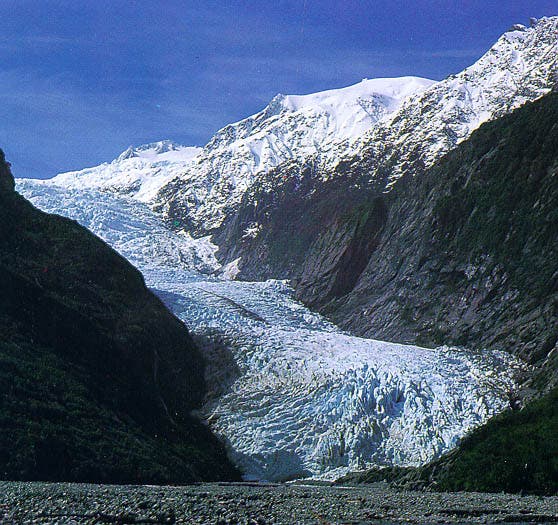New Zealand is running out of ice, a new study finds. Glaciers in the country’s Southern Alps have lost around 77% of their maximum volume, which was reached around 400 years ago (at the end of the Little Ice Age).

Image via Wikipedia.
The team also found that the rate of loss has doubled since that time, promoted by man-made climate change. In absolute terms, these glaciers have lost more ice than they still retain today.
Such a development is worrying not only from a global level — mountain glacier and ice cap melt account for around 25% of sea-level rise — but also for local communities and ecosystems. Glacier melt is often a key resource for plants, animals, and humans living downstream, providing irrigation, drinking water, and powering dams.
Inappropriate climate
“These findings quantify a trend in New Zealand’s ice loss. The acceleration in the rate of ice mass loss may only get worse as not only climate but also other local effects become more pronounced, such as more debris accumulating on glaciers surfaces and lakes at the bottom of glaciers swell, exacerbating melt,” says Dr. Jonathan Carrivick, from the University of Leeds’ School of Geography, lead author of the study.
The study determined the changes in volume experienced by 400 mountain glaciers across New Zealand’s Southern Alps for three time periods; the pre-industrial Little Ice Age to 1978, from 1978 to 2009, and from 2009 to 2019. These volumes were estimated using historical records of the glaciers’ outlines, and from the local distribution of moraines and trimlines (bodies of debris and clear lines created by glaciers as they move across the landscape).
Moraines and trimlines are reliable indicators of a glacier’s extent, and can be used to chart changes in their size over time.
Comparing glacier surface during the Little Ice Age and that in more recent times, the team found that ice loss increased twofold since the Little Ice Age, with most of that increase being concentrated in the last 40 years.
Around 17% of the ice volume present in the Little Ice Age was lost between 1978 and 2019. This left only 12% of the initial ice mass after 2019, most of it in low-altitude areas of the original glaciers (the ‘ablation zone’).
“Our results suggest that the Southern Alps has probably already passed the time of ‘peak water’ or the tipping point of glacier melt supply,” adds Carrivick.
“Looking forwards, planning must be made for mitigating the decreased runoff to glacier-fed rivers because that affects local water availability, landscape stability and aquatic ecosystems.”
All in all, the research shows that even the most ancient glaciers on the planet are buckling under climate change. Furthermore, they show that the destruction of such glaciers “has dramatically worsened since 2010,” according to co-author Dr. Andrew Lorrey.
The research comes as yet another alarm that not all is well on the planet, and that the problem is our emissions. Researchers have been urging for action in this area but, so far, policymakers have only engaged in modest efforts for change.
Sooner or later, these issues will start affecting each and every one of us directly — by impacting our wealth, our health, and our access to vital resources like food or water. And by then, it will be too late to fix them in our lifetimes, perhaps even in our children’s lifetimes.
The paper “Ice thickness and volume changes across the Southern Alps, New Zealand, from the little ice age to present” has been published in the journal Scientific Reports.






